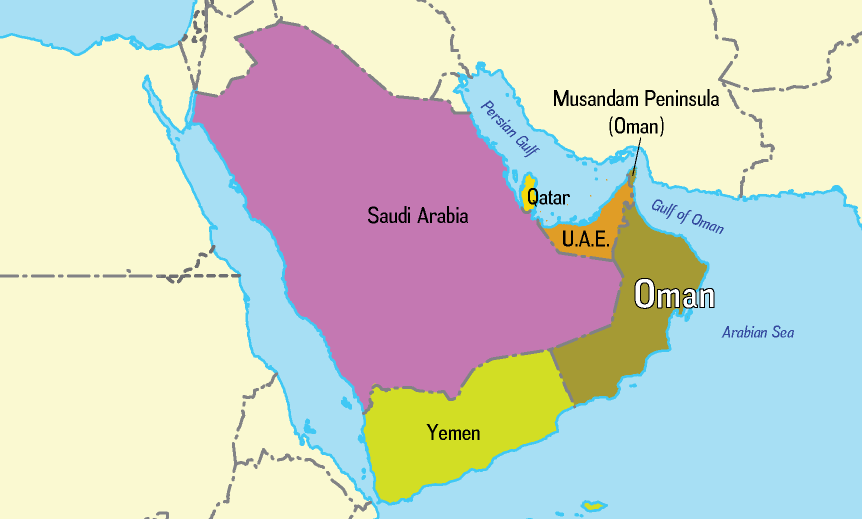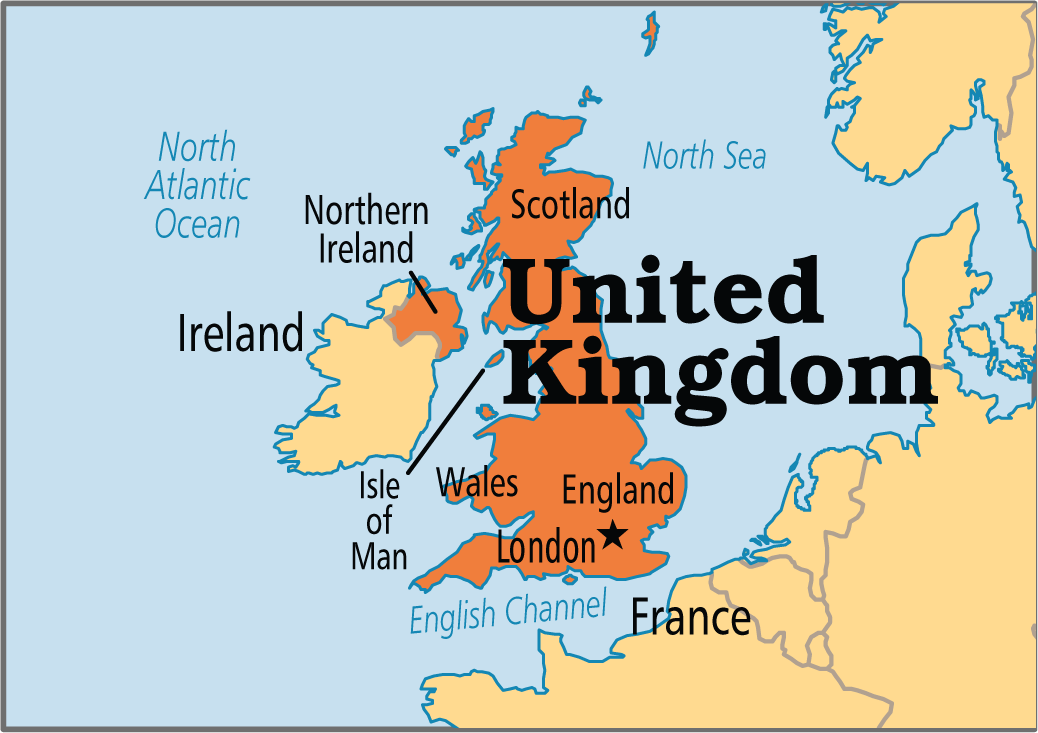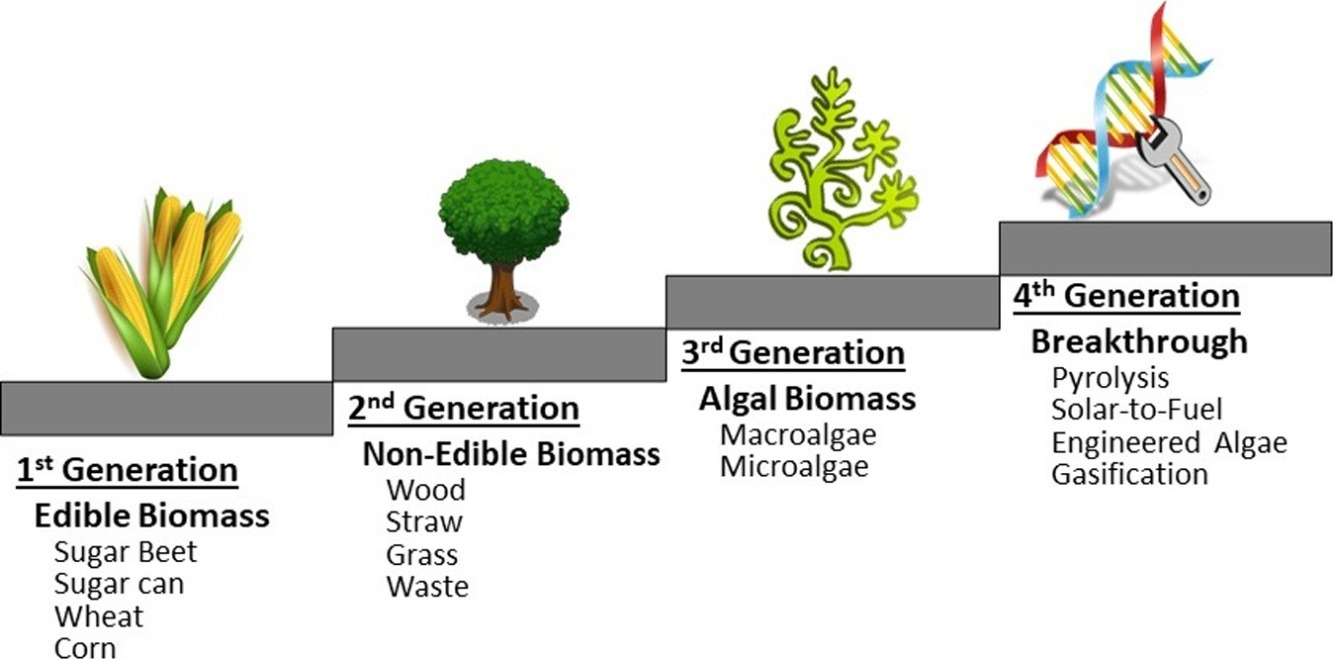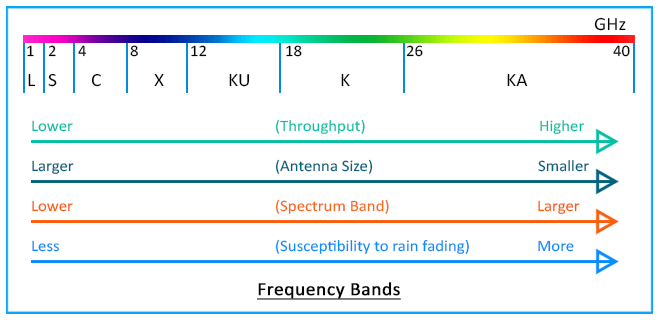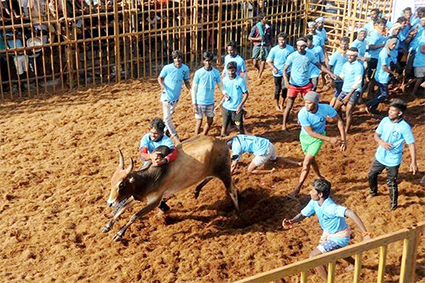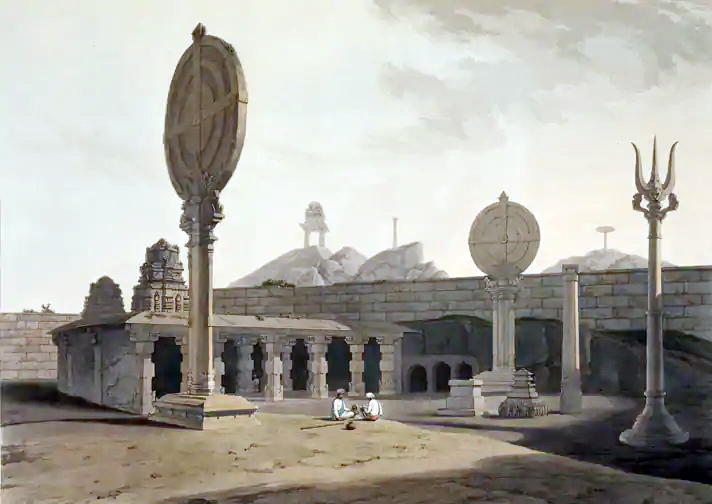Biodiversity & Environment
Adaptation Gap Report 2020: UNEP
Why in News
Recently, the United Nations Environment Programme (UNEP) Adaptation Gap Report 2020 estimated the annual cost of adaptation to the effects of climate change for developing countries to at least quadruple by 2050.
- The current cost for these countries is in the range of USD 70 billion (Rs 5.1 lakh crore) and may rise to USD 140-300 billion in 2030 and USD 280-500 billion in 2050.
Key Points
- Adaptation Cost:
- It includes costs of planning, preparing for, facilitating and implementing adaptation measures.
- The ever-increasing adaptation cost has also outpaced the growth in adaptation finance and that is the reason for a maintained Adaptation Finance gap.
- Adaptation Finance: It refers to the flow of funds to developing countries to help them tide over the damages caused by weather events from climate change.
- Adaptation Finance gap: It is the difference between Adaptation Cost and Adaptation Finance.
- Adaptation costs, in actual terms, is higher in developed countries but the burden of adaptation is greater for developing countries in relation to their gross domestic product.
- The developing countries, especially in Africa and Asia, which are least equipped to tackle climate change will also be the most impacted by it.
- Global Challenges :
- Rising Temperature: The world is heading for at least a 3°C temperature rise this century, according to current Paris Agreement pledges. Even if we limit global warming to well below 2°C, or even 1.5°C, the poor countries will suffer.
- The Pandemic: The Covid-19 pandemic has impacted adaptation efforts but its effect is not yet quantified.
- Other Challenges: Last year was not just marked by the pandemic but also by devastating natural calamities like floods, droughts, storms, forest fires and locust plagues impacting around 50 million lives globally.
- Global Adaptation for Climate Change: Three-quarters of all the countries have adopted at least one climate change adaptation planning instrument and most developing countries are working on national adaptation plans.
- Some of the Indian Initiatives to Fight Climate Change:
- India has shifted from Bharat Stage-IV (BS-IV) to Bharat Stage-VI (BS-VI) emission norms from 1st April 2020 which was earlier to be adopted by 2024.
- National Clean Air Programme (NCAP):
- It was launched in January 2019.
- It is a five-year action plan with a tentative target of 20-30% reduction in concentrations of PM10 and PM2.5 by 2024, with 2017 as the base year.
- It has distributed more than 360 million LED bulbs under the UJALA scheme, which has led to energy saving of about 47 billion units of electricity per year and reduction of 38 million tonnes of CO2 per year.
- The Jawaharlal Nehru National Solar Mission:
- It was launched in 2009 with the primary aim of achieving grid parity by 2022 and with coal-based thermal power by 2030.
- Aims to increase the share of solar energy in India's energy mix.
- National Action Plan on Climate Change (NAPCC):
- It was launched in 2008.
- It aims at creating awareness among the representatives of the public, different agencies of the government, scientists, industry and the communities on the threat posed by climate change and the steps to counter it.
United Nations Environment Programme
- The UNEP is a leading global environmental authority established on 5th june 1972.
- Functions: It sets the global environmental agenda, promotes the sustainable development within the United Nations system, and serves as an authoritative advocate for global environment protection.
- Major Reports: Emission Gap Report, Global Environment Outlook, Frontiers, Invest into Healthy Planet.
- Major Campaigns: Beat Pollution, UN75, World Environment Day, Wild for Life.
- Headquarters: Nairobi, Kenya.
International Relations
India & Oman
Why in News
Recently, a meeting of the India-Oman Strategic Consultative Group (IOSCG) was held with the first high-level official visit from Oman to India since the onset of Covid-19 pandemic.
Key Points
- Partnership during Pandemic: India assured assistance to Oman in its requirement for Covid-19 vaccines. India had also facilitated food and medical supplies to Oman during the pandemic.
- Previously both the countries have expressed satisfaction on the operationalisation of the Air Bubble arrangement between the two countries during covid-19.
- Air bubbles (travel corridors or travel bubbles) are systems established between two countries that perceive each other to be safe and allow carriers of both the countries to fly passengers either way without any restrictions.
- Previously both the countries have expressed satisfaction on the operationalisation of the Air Bubble arrangement between the two countries during covid-19.
- Comprehensive Review: Both sides reviewed the entire spectrum of India-Oman relationship including in political, energy, trade, investment, defence, security, space, mining, Science & Technology, culture and consular fields.
India Oman Relations
- Background:
- The two countries across the Arabian Sea are linked by geography, history and culture and enjoy warm and cordial relations, which are attributed to historical maritime trade linkages.
- While people-to-people contact between India and Oman can be traced back 5000 years, diplomatic relations were established in 1955 and the relationship was upgraded to Strategic partnership in 2008. Oman has been a key pillar of India's West Asia Policy.
- Political Relations:
- Visits at the highest level have been exchanged frequently between India and Oman. Ministerial level visits have taken place regularly.
- The Sultanate of Oman is a strategic partner of India in the Gulf and an important interlocutor at the Gulf Cooperation Council (GCC), Arab League and Indian Ocean Rim Association (IORA) fora.
- Defence Cooperation:
- The Ministries of Defence of both countries review their relations annually under the aegis of Joint Military Cooperation Committee meeting.
- India and Oman conduct regular biennial bilateral exercises between all three services.
- Army exercise: Al Najah
- Air Force exercise: Eastern Bridge
- Naval Exercise: Naseem Al Bahr
- Since 2008, Oman has been extending its support to Indian Navy’s anti-piracy missions and Indian Naval Ships are regularly welcomed by Oman for Overseas Deployments.
- Economic & Commercial Relations:
- India accords a high priority to expanding its economic and commercial ties with Oman. Institutional mechanisms like Joint Commission Meeting (JCM) and Joint Business Council (JBC) oversee economic cooperation between India and Oman.
- The bilateral trade and investment between India and Oman remain robust and buoyant.
- India is among Oman’s top trading partners.
- For Oman, India was the 3rd largest (after UAE and China) source for its imports and 3rd largest market (after UAE and Saudi Arabia) for its non-oil exports in 2018.
- Major items of India’s exports to Oman include mineral fuels, mineral oils and products of their distillation; boilers, machinery and mechanical appliances; articles of iron or steel; electrical machinery and equipment, textiles and garments, chemicals, tea, coffee, spices etc
- Main items of India’s imports from Oman include fertilizers; mineral fuels, mineral oils and products of their distillation; bituminous substances etc.
- India is among Oman’s top trading partners.
- Indian financial institutions such as State Bank of India, Public Sector Undertakings such as Air India, Life Insurance Corporation(LIC), have presence in Oman. Indian companies have invested in Oman in sectors like iron and steel, cement, fertilizers, textile etc.
- India-Oman Joint Investment Fund (OIJIF), a JV between State Bank of India and State General Reserve Fund (SGRF) of Oman, a special purpose vehicle to invest in India, has been operational.
- Access to Duqm Port: Oman has allowed India, including its navy, access to its Duqm port, about 550 km south of the capital Muscat. The Port of Duqm SEZ is earmarked to be the Indian Ocean’s largest deep-sea port.
- An agreement to develop Little India, an integrated tourism complex project in Duqm worth 748 million USD, has been signed between the two countries.
- Cultural Cooperation:
- India and Oman have close cultural relations. The vibrant Indian expatriate community in Oman regularly hosts cultural performances and invites celebrity artists and singers from India.
- Indian Community in Oman:
- The large, diverse and highly regarded expatriate Indian community in Oman is spread over the entire spectrum of professions. Thousands of Indians are working as doctors, engineers,etc.
- There are many Indian schools offering CBSE syllabus catering to the educational needs of about 45,000 Indian children.
Way Forward
- India does not have enough energy resources to serve its current or future energy requirements. The rapidly growing energy demand has contributed to the need for long term energy partnerships with countries like Oman.
- Oman’s Duqm Port is situated in the middle of international shipping lanes connecting East with West Asia.
- India needs to engage with Oman and take initiatives to utilise opportunities arising out of the Duqm Port industrial city.
International Relations
Kashmir Debate in UK’s Parliament
Why in News
Recently, India has expressed its concern over a debate on Kashmir in the Houses of Parliament complex in London.
- Earlier in october 2020 a delegation of European Union Members of Parliament (MEPs), comprising 27 Members of the European Parliament (MEPs) from Italy, Britain, France, Germany, Czech Republic, and Poland, visited Srinagar, nearly three months after the revocation of Article 370.
Key Points
- Background:
- A debate was organised by some Members of Parliament in the United Kingdom (UK), titled "Political situation in Kashmir".
- It raised concerns of alleged human rights violations and called on the UK government to seek access to the region for direct reports from Jammu and Kashmir and Pakistan-occupied Kashmir (PoK) to be presented in the UK Parliament in future.
- India’s Concern:
- The terminology used in the debate was problematic, regarding the reference to 'Kashmir'' in the title - there is a need to differentiate between the Union Territory of Jammu and Kashmir, which is an integral part of India, and Pakistan Occupied Kashmir (when the erstwhile princely state of Kashmir legally acceded to India in October 1947, this part was forcibly and illegally occupied by Pakistan).
- The debate ignored current ground reality of the Union Territory of Jammu and Kashmir and, instead chose to reflect false assertions of the kind promoted by a third country (Pakistan), such as unsubstantiated allegations of 'genocide'', 'rampant violence'' and 'torture'.
- India’s Stand:
- The Indian High Commission in London sought to highlight that since last year, a smart wi-fi project has enabled high-speed internet access in the region and that despite threats of terror attacks, challenging weather conditions and the Covid-19 pandemic, landmark District Development Council (DDC) elections were concluded in December 2020.
- India stands ready to engage with Pakistan on all outstanding issues – including on Jammu and Kashmir in accordance with the Shimla Agreement (1972) and the Lahore Declaration (1999) in an atmosphere free from terror, hostility and violence.
- UK Government’s Stand:
- Although there were human rights concerns on both sides of the Line of Control (LoC), the UK will not play any mediatory role in a bilateral India-Pakistan matter.
- The government's policy (on Kashmir) remains stable, it's unchanged.
- It continues to believe that India and Pakistan need to find a lasting political resolution to the situation that takes into account the wishes of the Kashmiri people as laid out in the Simla Agreement (1972).
Governance
Pradhan Mantri Kaushal Vikas Yojana 3.0
Why in News
The Ministry of Skill Development and Entrepreneurship (MSDE) has launched Pradhan Mantri Kaushal Vikas Yojana (PMKVY) 3.0, in a bid to empower India’s youth with employable skills by making over 300 skill courses available to them.
Key Points
- Background:
- Skill India Mission was launched by the government in 2015 under which the flagship scheme Pradhan Mantri Kaushal Vikas Yojana (PMKVY) is run.
- It aims to train over 40 crore people in India in different skills by 2022. It aims at vocational training and certification of Indian youth for a better livelihood and respect in the society.
- PMKVY 1.0:
- Launch: India’s largest Skill Certification Scheme - Pradhan Mantri Kaushal Vikas Yojana (PMKVY) - was launched on 15th July, 2015 (World Youth Skills Day).
- Aim: To encourage and promote skill development in the country by providing free short duration skill training and incentivizing this by providing monetary rewards to youth for skill certification.
- Implementation: PMKVY is implemented by the National Skills Development Corporation (NSDC) under the guidance of the Ministry of Skill Development and Entrepreneurship (MSDE).
- Key Components: Short Term Training, Special Projects, Recognition of Prior Learning, Kaushal & Rozgar Mela, etc.
- Outcome: In 2015-16, 19.85 lakh candidates were trained.
- PMKVY 2.0:
- Coverage: PMKVY 2016-20 (PMKVY 2.0) was launched by scaling up both in terms of Sector and Geography and by greater alignment with other missions of the Government of India like Make in India, Digital India, Swachh Bharat, etc.
- Budget: Rs. 12,000 Crore.
- Implementation Through Two Components:
- Centrally Sponsored Centrally Managed (CSCM): This component was implemented by National Skill Development Corporation. 75% of the PMKVY 2016-20 funds and corresponding physical targets have been allocated under CSCM.
- Centrally Sponsored State Managed (CSSM): This component was implemented by State Governments through State Skill Development Missions (SSDMs). 25% of the PMKVY 2016-20 funds and corresponding physical targets have been allocated under CSSM.
- Outcome: More than 1.2 Crore youth have been trained/oriented through an improved standardized skilling ecosystem in the country under PMKVY 1.0 and PMKVY 2.0.
- PMKVY 3.0:
- Coverage: Launched in 717 districts, 28 States/eight UTs, PMKVY 3.0 is a step towards ‘Atmnanirbhar Bharat’.
- Implementation: It will be implemented in a more decentralized structure with greater responsibilities and support from States/UTs and Districts.
- District Skill Committees (DSCs), under the guidance of State Skill Development Missions (SSDM), shall play a key role in addressing the skill gap and assessing demand at the district level.
- Features:
- It envisages training of eight lakh candidates over a scheme period of 2020-2021 with an outlay of Rs. 948.90 crore.
- The 729 Pradhan Mantri Kaushal Kendras (PMKKs), empaneled non-PMKK training centres and more than 200 Industrial Training Institutes (ITIs) under Skill India will be rolling out PMKVY 3.0 training to build a robust pool of skilled professionals.
- It will be more trainee- and learner-centric. The focus is on bridging the demand-supply gap by promoting skill development in areas of new-age and Industry 4.0 job roles.
- It will be a propagator of vocational education at an early level for youth to capitalize on industry-linked opportunities.
- The National Educational Policy 2020 also puts focus on vocational training for a holistic growth and increased employability.
- By taking the bottom-up approach to training, it will identify job roles that have demand at the local level and skill the youth, linking them to these opportunities (Vocal for Local).
- It will encourage healthy competition between states by making available increased allocation to those states that perform better.
- It envisages training of eight lakh candidates over a scheme period of 2020-2021 with an outlay of Rs. 948.90 crore.
Governance
Modified Scheme to Produce 1G Ethanol
Why in News
Recently, the Department of Food & Public Distribution has notified a modified scheme for extending financial assistance for producing 1st Generation (1G) ethanol.
- The aim is to achieve blending targets of ethanol with petrol (Ethanol Blending Programme).
Key Points
- Ethanol Blending Programme (EBP):
- Aim: It aims at blending ethanol with petrol, thereby bringing it under the category of biofuels and saving millions of dollars by cutting fuel imports and decreasing carbon emissions.
- Target: The target is to achieve 20% blending of ethanol by 2025.
- Ethanol Extraction from Foodgrains:
- In 2018, the Central Government extended the ambit of the EBP programme to extract the fuel from surplus quantities of food grains such as maize, jawar, bajra fruit and vegetable waste.
- Earlier, only excess sugarcane production was allowed to be converted into ethanol for procurement under the programme.
- Financial Assistance for Expansion of Ethanol Distillation Capacity: The government will provide interest subvention (on loans) to encourage the funding in this sector.
- Aim:
- To set up distilleries for producing 1st Generation (1G) ethanol from feed stocks such as cereals (rice, wheat, barley, corn & sorghum), sugarcane, sugar beet etc.
- To convert molasses (a sugar byproduct) based distilleries to dual feedstock.
- Aim:
- Expected Benefits:
- Enhancing Farmers’ Income:
- Facilitate farmers to diversify their crops to cultivate particularly maize/corn which needs less water compared to sugarcane and rice.
- Provide Employment:
- Investment in capacity addition or establishment of new distilleries shall provide new employment opportunities in rural areas.
- Promote Distributed Ethanol Production:
- Bringing new grain based distilleries in the entire country would result in distributed production of ethanol and would save a lot of transportation cost and thus prevent delays in meeting the blending target.
- Enhancing Farmers’ Income:
- Related Initiatives:
- E20 Fuel: Earlier, the Indian government had invited public comments for introducing adoption of E20 fuel (a blend of 20% ethanol with gasoline).
- Pradhan Mantri JI-VAN Yojana, 2019: The objective of the scheme is to create an ecosystem for setting up commercial projects and to boost research and development in the 2G Ethanol sector.
- Reduction in GST: The Government has also reduced GST on ethanol for blending in fuel from 18% to 5%.
- National Biofuel Policy 2018: The Policy categorises biofuels as "Basic Biofuels" viz. First Generation (1G) bioethanol & biodiesel and "Advanced Biofuels" - Second Generation (2G) ethanol, Municipal Solid Waste (MSW) to drop-in fuels, Third Generation (3G) biofuels, bio-CNG etc. to enable extension of appropriate financial and fiscal incentives under each category.
Way Forward
- Proper implementation of the biofuel policy and ethanol blending programme should ensure fuel requirements should not compete with food requirements and that only surplus food crops should be used for fuel production.
- Alternatives like 3rd generation (derived from algae) and 4th generation biofuels (derived from genetically engineered plants or biomass) should be encouraged.
Science & Technology
Doppler Weather Radars
Why in News
Recently, the Union Minister for Earth Sciences commissioned two of the ten indigenously built X-Band Doppler Weather Radars (DWR) which will closely monitor the weather changes over the Himalayas.
- A multi-mission meteorological data receiving and processing system developed in collaboration with Indian Space Research Organisation (ISRO) was also launched.
- This new system will capture, process and make available for use satellite data within seven minutes as opposed to 20 minutes taken by earlier systems.
Key Points
- Developed By : The DWR has been designed and developed by ISRO and manufactured by Bharat Electronics Limited (BEL), Bengaluru.
- Significance:
- Covering the central and western Himalayas, these dual polarised radars will gather atmospheric variations and pick signals of extreme weather events.
- Uttarakhand and Himachal Pradesh are highly prone to cloud bursts, landslides, heavy rain and snowfall. Timely weather forecasts and warnings would ensure the governments make advance plans and initiate rescue measures.
Radars
- Radar (Radio Detection and Ranging):
- It is a device which uses electromagnetic waves in the microwaves region to detect location (range & direction), altitude, intensity and movement of moving and non-moving objects.
- Doppler radar :
- It is a specialized radar that uses the Doppler effect to produce velocity data about objects at a distance
- It does this by bouncing a microwave signal off a desired target and analyzing how the object’s motion has altered the frequency of the returned signal.
- This variation gives direct and highly accurate measurements of the radial component of a target’s velocity relative to the radar.
- It is a specialized radar that uses the Doppler effect to produce velocity data about objects at a distance
- Doppler Weather Radar:
- Based on Doppler principle the radar is designed to improve precision in long-range weather forecasting and surveillance using a parabolic dish antenna and a foam sandwich spherical radome.
- DWR has the equipment to measure rainfall intensity, wind shear and velocity and locate a storm centre and the direction of a tornado or gust front.
- Types Of Doppler Radars : Doppler radar can be divided into several different categories according to the wavelength which are L,S,C,X,K.
- X band radars: They operate on a wavelength of 2.5-4 cm and a frequency of 8-12 GHz. Because of the smaller wavelength, the X band radar is more sensitive and can detect smaller particles.
- Application:
- These radars are used for studies on cloud development because they can detect the tiny water particles and also used to detect light precipitation such as snow.
- X band radars also attenuate (become less effective) very easily, so they are used for only very short range weather observation.
- Due to the small size of the radar, it can therefore be portable like the Doppler on Wheels (DOW). Most major airplanes are equipped with an X band radar to pick up turbulence and other weather phenomena.
- This band is also shared with some police speed radars and some space radars.
Indian Heritage & Culture
Jallikattu
Why in News
As the assembly polls are to be held in Tamil Nadu in 2021, the Pongal festival and Jallikattu, the traditional bull-taming sport, have caught the attention of the Political Parties in the country.
Key Points
- About Jallikattu:
- Traditional:
- A tradition over 2,000 years old, Jallikattu is a competitive sport as well as an event to honour bull owners who rear them for mating.
- It is a violent sport in which contestants try to tame a bull for a prize; if they fail, the bull owner wins the prize.
- Areas of Sport:
- It is popular in Madurai, Tiruchirappalli, Theni, Pudukkottai and Dindigul districts of Tamil Nadu known as the Jallikattu belt.
- Time of Event:
- It is celebrated in the second week of January, during the Tamil harvest festival, Pongal.
- Importance in Tamil Culture:
- Jallikattu is considered a traditional way for the peasant community to preserve their pure-breed native bulls.
- At a time when cattle breeding is often an artificial process, conservationists and peasants argue that Jallikattu is a way to protect these male animals which are otherwise used only for meat if not for ploughing.
- Kangayam, Pulikulam, Umbalachery, Bargur and Malai Maadu are among the popular native cattle breeds used for Jallikattu. The owners of these premium breeds command respect locally.
- Jallikattu is considered a traditional way for the peasant community to preserve their pure-breed native bulls.
- Traditional:
- Legal Interventions on Jallikattu:
- In 2011, the Centre added bulls to the list of animals whose training and exhibition is prohibited.
- In 2014, the Supreme Court banned the bull-taming sport, ruling on a petition that cited the 2011 notification.
- Current Legal Position on Jallikattu:
- The state government has legalised these events, which has been challenged in the court.
- In 2018, the Supreme Court referred the Jallikattu case to a Constitution Bench, where it is pending now.
- Conflict to be Resolved:
- Whether the Jallikattu tradition can be protected as a cultural right of the people of Tamil Nadu which is a fundamental right.
- Article 29 (1) against Rights of animals.
- Article 29 (1) mandates that “any section of the citizens residing in the territory of India or any part thereof having a distinct language, script or culture of its own shall have the right to conserve the same”.
- Whether the Jallikattu tradition can be protected as a cultural right of the people of Tamil Nadu which is a fundamental right.
- Position in Other States for Similar Sports:
- Karnataka too passed a law to save a similar sport, called Kambala.
- Except in Tamil Nadu and Karnataka, where bull-taming and racing continue to be organised, these sports remain banned in all other states including Andhra Pradesh, Punjab and Maharashtra due to the 2014 ban order from the Supreme Court.
Important Facts For Prelims
Thiruvalluvar Day
Why in News
The Prime Minister remembered Thiruvalluvar on the occasion of Thiruvalluvar Day (15th January 2021), observed to mark the birth anniversary of Tamil poet and philosopher.
Key Points
- About the Thiruvalluvar Day:
- It was first celebrated on 17th-18th May in 1935.
- In the present time, it is usually observed either on 15th or 16th January in Tamil Nadu and is a part of Pongal celebrations.
- About Thiruvalluvar:
- Thiruvalluvar, also called Valluvar, was a Tamil poet-saint.
- He is regarded as a cultural and moral icon for Tamils across caste and religious lines.
- The period when he lived is debated, as is his religious identity.
- Some place him in the third or fourth century; others put him in the eighth or ninth.
- Some call him a Hindu; some trace his past to Jainism; Dravidian groups count him as a saint, as he dismissed the caste system.
- His primary work Thirukkural (contribution to Tamil Literature) contains 1330 couplets (kurals).
- The text is divided into three parts with teachings on dharma, artha, and kama (virtue, wealth and love).
- Thiruvalluvar, also called Valluvar, was a Tamil poet-saint.
- Social Significance of Thiruvalluvar:
- A statue of the legendary Tamil poet was unveiled in Ulsoor, near Bengaluru, in 2009. A statue of Valluvar was also erected outside the School of Oriental and African Studies in Russell Square, London.
- A 133-foot tall statue of Thiruvalluvar stands at Kanyakumari as well.
- The Thiruvalluvar University was established in Vellore district of Tamilnadu by the Government of Tamilnadu in October 2002.
- In 1976, a temple-memorial called Valluvar Kotam was built in Chennai and houses one of the largest auditoriums in Asia.
- In the early 16th century, a temple dedicated to Thiruvalluvar was built within the Ekambareswarar temple complex in Mylapore, Chennai.
- A statue of the legendary Tamil poet was unveiled in Ulsoor, near Bengaluru, in 2009. A statue of Valluvar was also erected outside the School of Oriental and African Studies in Russell Square, London.
Important Facts For Prelims
Gavi Gangadhareshwara Temple: Karnataka
Why in News
The overclouded sky impacted the annual phenomenon called Surya Majjana in Gavi Gangadhareshwara Temple (Karnataka).
Key Points
- Location: This temple is located in Bengaluru, Karnataka.
- Meaning of the Name:
- The temple derives its name from the combination of topographical features and mythology: gavi (cave), and Gangadhareswara (shiva) means the Lord who adorns the Ganga.
- Establishment:
- It is believed to have been built by Kempe Gowda I in its present form.
- Architecture Features:
- Celestial Oriented Architecture: Built in Vijaynagar style, it has unique celestial oriented rock cut architecture due to which Surya majjana occurs on Sankranti every year.
- Surya Majjana:
- Every year on the Makar Sankranti, the sun rays fall on the Shiv linga located in the cave (gavi) making it shine for ten minutes.
- Surya Majjana:
- Two Monolithic Structures:
- In the forecourt stand two monolithic structures, named Suryapana and Chandrapana - each consisting of a massive disc atop a supporting pillar.
- They have engravings of sitting bulls on the discs face each other.
- Iconography of Shiva:
- The compound of the temple is adorned with monolith structures associated with the iconography of Shiva - the trishula (trident) and the damaru (an hourglass-shaped, two-headed drum).
- In between the two discs there is a brass dhwajasthambha (flagstaff), and a small cubicle housing a statue of Nandi, Shiva’s bull carrier.
- Celestial Oriented Architecture: Built in Vijaynagar style, it has unique celestial oriented rock cut architecture due to which Surya majjana occurs on Sankranti every year.
Kempe Gowda I
- Kempe Gowda I was a feudatory king under Vijayanagar empire.
- He founded the city of Bengaluru in 1537 and named it after their family deity’s consort, Kempamma.
- He is also credited with the construction of several lakes or keres for the purposes of drinking water and irrigation eg. the Dharmambudhi lake.
Other Sites in Karnataka
- Basavakalyan,
- Hampi (World Heritage Site),
- Badami,
- Aihole, etc.
Important Facts For Prelims
Nagi-Nakti Bird Sanctuaries
Why in News
Recently, Bihar’s first state-level bird festival ‘Kalrav’ started at the Nagi-Nakti bird sanctuaries in the Jamui district, Bihar.
- It is a 3-day event and is expected to draw experts and bird lovers from all over the country.
Key Points
- About:
- The Nagi Dam and Nakti Dam are two sanctuaries so close to each other that they can be taken as one bird area.
- The Nagi- Nakti Bird Sanctuaries have been the home of a wide variety of indigenous species of birds and of migratory birds that turn up during the winters from places like Eurasia, Central Asia, the Arctic Circle, Russia and Northern China..
- Avian Fauna :
- Over 136 species of birds have been spotted at these sanctuaries.
- Bar-headed geese: Around 1,600 bar-headed geese, which is about 3% of the global population of this variety, have been seen here, as per a report of the Wetlands International and because of this rare phenomenon, the Birdlife International, a global body, has held the Nagi Dam Bird Sanctuary to be globally important for conservation of birds' population and has declared it as an important bird area.
- Wetland International is a global not-for-profit organisation dedicated to the conservation and restoration of wetlands.
- BirdLife International is a global partnership of conservation organisations (NGOs) that strives to conserve birds, their habitats and global biodiversity, working with people towards sustainability in the use of natural resources.
- Other major birds: Indian Courser, Indian Sandgrouse, Yellow-wattled Lapwing and Indian Robin.
- Major threats to the biodiversity of the sanctuaries: Agricultural runoff; Land dispute between Irrigation and Forest Departments; Leasing out of the site for fishing.
- Other Bird Sanctuaries of Bihar:
- Gautam Budha bird sanctuary, Gaya
- Kawar Jheel bird sanctuary, Bigusarai
- Kusheshwar asthan bird sanctuary, Darbhanga
Important Facts For Prelims
UAV Procurement by Indian Army
Why in News
The Indian Army has signed a contract to buy high-altitude drones from ideaForge for USD 20 million.
- ideaForge is a start-up founded and incubated by the alumni of Indian Institute of Technology-Bombay (IIT-B).
- The contract is for a high-altitude variant of SWITCH UAV, an indigenous system used in surveillance operations.
Key Points
- Significance of the Contract:
- It marks a strategic shift of focusing on indegenous technologies in the Indian defence procurement process.
- This is an example of how government-funded start-ups can help the country grow.
- This is the biggest such order in terms of the contract value, for any Indian equipment manufacturer for drones.
- Importance of UAV for the Army:
- The Army has placed an order for the advanced high-altitude version of SWITCH UAV, a vertical take-off and landing drone. It is a fixed-wing hybrid Unmanned Aerial Vehicle (UAV). Its features include:
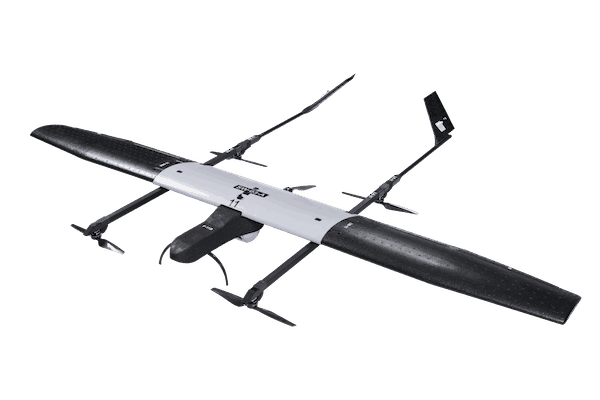
- Advanced flight time with a range of 15 km.
- Around 2.6m long and 1.8m wide and weighs less than 6.5 kg.
- Higher safety and simple operation with additional fail-safe redundancies.
- Used for long-duration operations in harsh environments for day and night surveillance in Intelligence, Surveillance and Reconnaissance (ISR) missions.
- Used in Photogrammetry - the technology of obtaining reliable information about physical objects and the environment through the process of recording, measuring and interpreting photographic images and patterns of electromagnetic radiant imagery.
- The Army has placed an order for the advanced high-altitude version of SWITCH UAV, a vertical take-off and landing drone. It is a fixed-wing hybrid Unmanned Aerial Vehicle (UAV). Its features include:
- Other Uses: Crowd Monitoring, Disaster Management, Precision Agriculture, Mining, etc.

